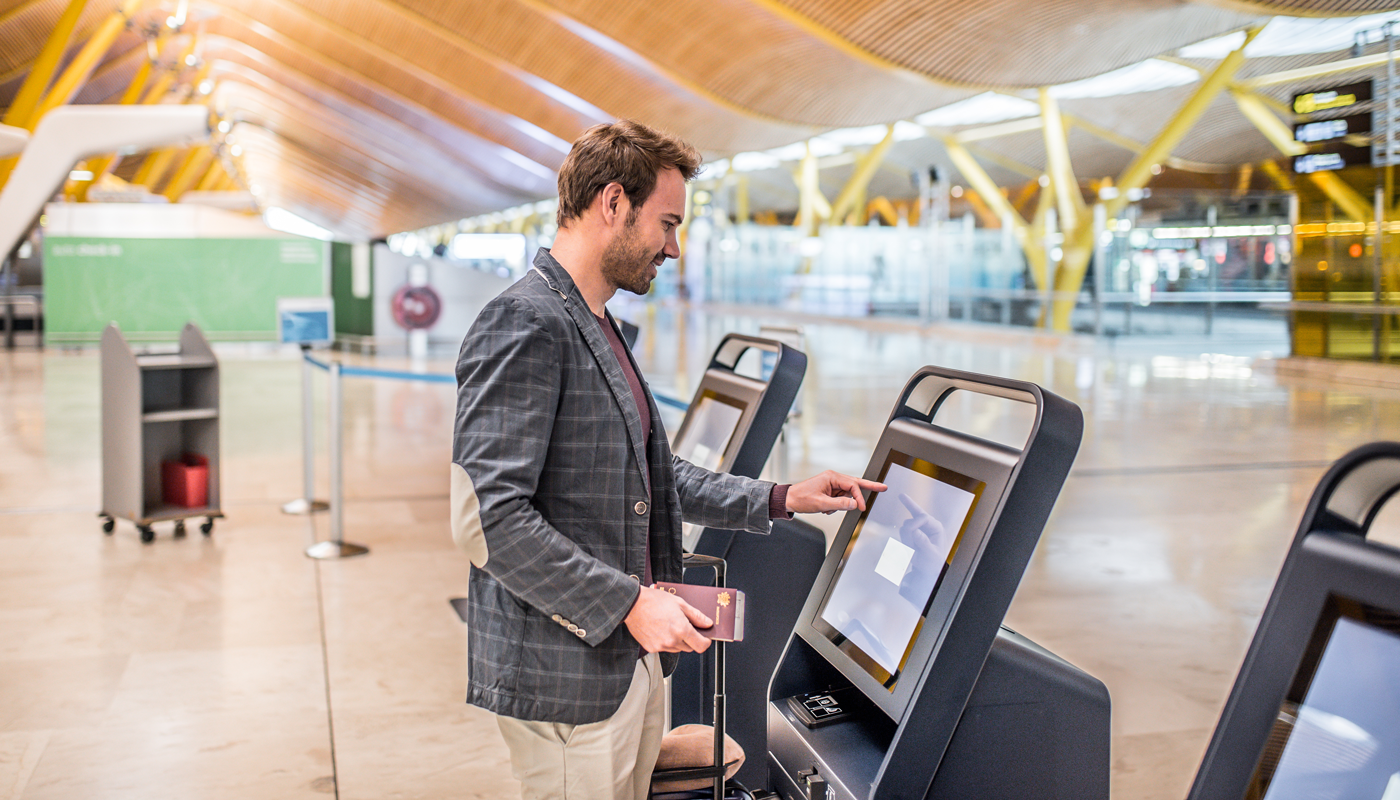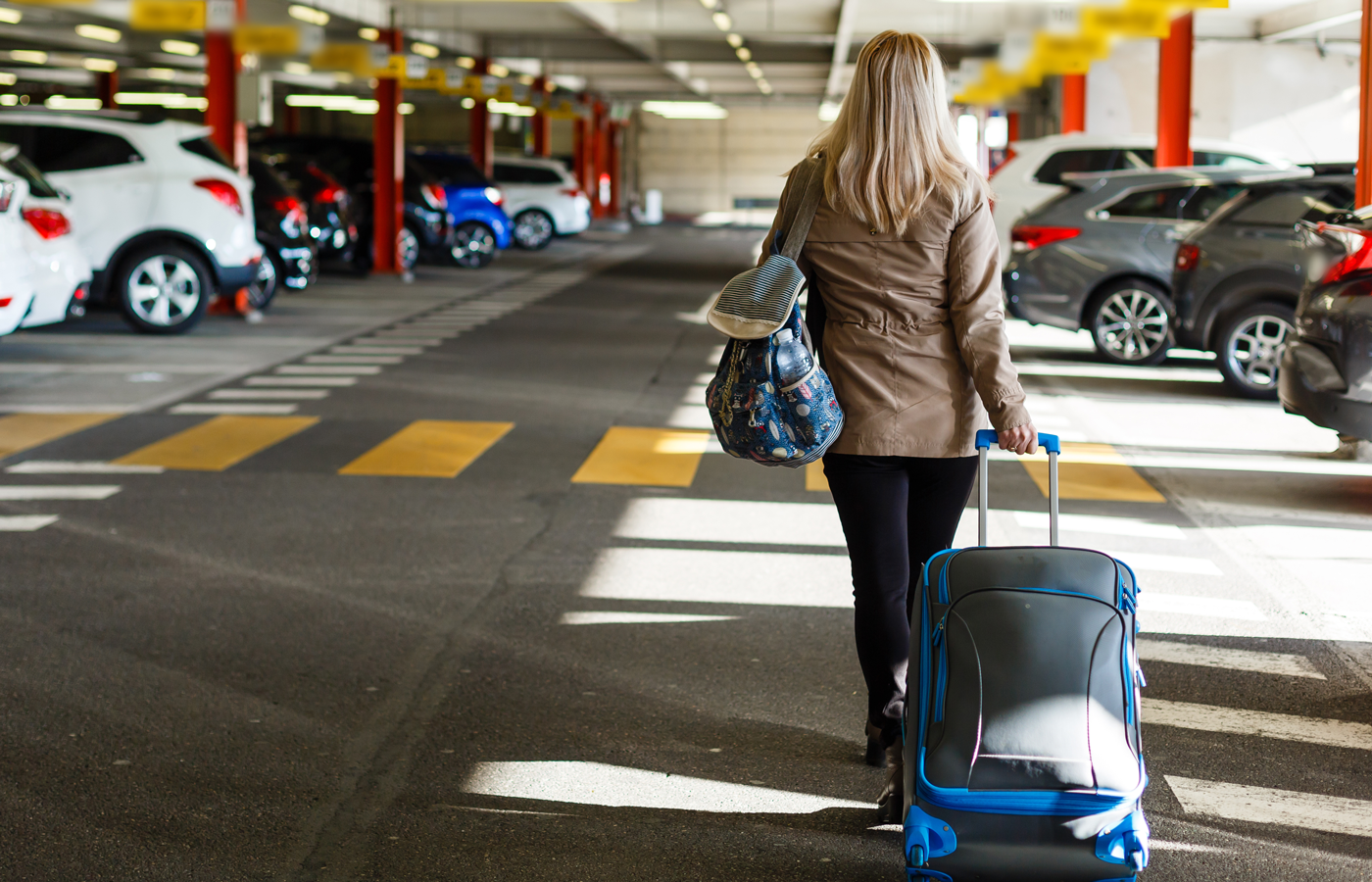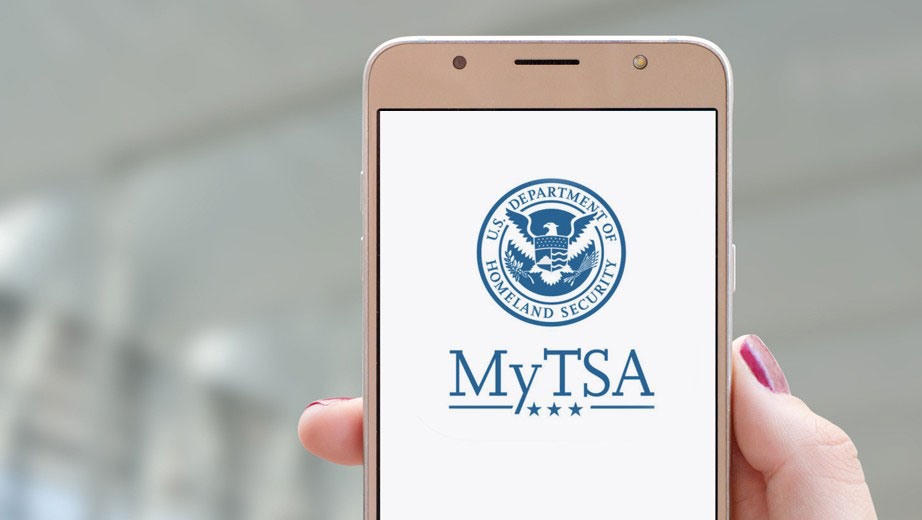How Early Should You Really Get to the Airport?
Your guide to properly gauging the right amount of time needed and key factors to consider.
 Adobe Images
Adobe Images
You’re setting off on a journey via a plane to someplace far, en route through the clouds. Arrive at the airport with the right timing, and you’ll ease into your seat on the plane without breaking a sweat. Miscalculate your timing, and you could be watching your plane depart into the horizon from the gate.
There’s no denying airports can be confusing hubs that require planning and patience to arrive for your flight with adequate time. And with more people than ever traveling, just how much time do you need relative to you and your journey? We’re here to answer that question.
Here’s a helpful guide to calculating the best time to arrive at the airport, plus many valuable tips and tricks to ensure you’re cleared for take-off.
 Adobe Images
Adobe Images
Checking In On Time
Checking in online before arriving at the airport is one of the most essential ways to ensure a smooth trip. The online check-in process will walk you through the crucial guidelines, policies and procedures to follow so you aren’t surprised during your travels. Most airlines allow online check-in 24 hours before a flight’s scheduled departure time, and some international airlines open online check-in 48 hours before departure.
Upon completing the online check-in process, you can access your boarding pass. Boarding passes are now most commonly delivered through email or SMS text. Before arriving at the airport, consider downloading your airline’s app and signing in with your account. The app will likely provide access to your boarding pass and additional flight information and airline updates.
If you’re checking bags, planning ahead when checking in can save you money and time at the airport. AAA Travel Agent Patti Spears says, “pre-paying for your check bags when you check in online can make the time waiting at the counter non-existent.”
If you prefer checking in to your flight in person, domestic airlines typically open check-in two to three hours before departure. International check-in normally begins at least three hours before departure. Baggage check-in depends on the airline and typically ranges from two to four hours before departure.
 Adobe Images
Adobe Images
Before You Leave Home
Be sure to reconfirm flights before leaving home and keep all your travel and health documents together in a carry-on. AAA Travel Agent Genevieve C. Albarin says, “using the travel checklist AAA provides to its members helps make sure you’re fully prepared.”
Ensure all your devices are charged and that charging cables are easily accessible. Consider bringing a portable charger for longer travel days. Albarin notes that as more travelers use their smartphones for travel records, “make sure you have all airline and travel apps downloaded and signed into, and all your related travel emails in a folder so you’re not scrambling around trying to find information at the last minute.”
Work backward from your departure time to calculate when you should head out the door. If you’re taking a taxi, ride-share or other private transfer, ensure it's booked in advance and allows for sufficient travel time.
Know before you go! Check out these helpful resources to make sure you're prepared for any adventure you’re planning.
Become Informed Adobe Images
Adobe Images
When Should I Arrive at the Airport?
As a general guideline, it is best to arrive at the airport at least two hours before your domestic departure and allow at least three hours for any international flight.
Spears recognizes that the current guidelines “are a lot more than they used to be” and recommends sticking to them, as “there are many more pieces to the puzzle” in modern-day air travel.
A few top factors to consider when planning how early to arrive at the airport include:
The Busiest Times at the Airport: The school calendars typically dictate the wave of travel in major airports. Albarin notes that “spring breaks and summer vacations are busy for many airports, especially Fridays and weekends. Tuesdays and Wednesdays are the least crowded times in airports, and you get better airfare prices on those days as well.”
Parking and Transportation: If you’re driving to the airport, factor in time for parking and taking a shuttle to the terminal. Airport parking lots can fill up quickly, especially during peak travel times, so having a plan and knowing where to park can save you valuable time. (Pro Tip: AAA Members enjoy exclusive discounts on airport parking and shuttle services.)
Security Lines: For all air travel, you’ll go through a TSA checkpoint, which can vary depending on the time of day. TSA security lines are busiest in the mornings, especially between 6 and 8 a.m. (Pro Tip: If you are traveling with kids, practice the security line at home so they know what to expect. This can help ease any anxiety and speed up the process when you arrive at the airport.)
TSA Guidelines: Get familiar with the TSA guidelines before packing your carry-on and checked bags. To expedite your security process, Spears recommends wearing slip-on shoes (with socks so you don’t have to go barefoot in the airport) and carrying medicines in your carry-on bag, all in one Ziploc bag in their original prescription bottles to avoid any issues during security checks. Having them easily accessible will make it easier for TSA agents to verify and will save you time.
 Adobe Images
Adobe Images
Priority Status: Having priority status or reserving a premium seat on your flight can save you significant time and enhance your overall airport experience. Here are some ways you can benefit from these options:
- Airline Priority Status: Airlines often give priority status to frequent flyers, business class passengers and those holding premium credit cards associated with the airline. This status typically includes perks such as priority check-in, security lines and boarding, which can drastically reduce waiting times.
- TSA PreCheck: TSA PreCheck is a trusted traveler program that offers expedited security screening at U.S. airports. With TSA PreCheck, you can use an expedited security line, keep your shoes on, and leave electronics and liquids in your bag.
- Clear: Clear is another program that helps you bypass regular security lines by using biometric verification (fingerprints and iris scans) to identify you. Benefits of Clear include dedicated Clear lanes to skip the traditional ID check and proceed directly to the physical screening.
- Global Entry: For international travelers, Global Entry is a U.S. Customs and Border Protection (CBP) program that allows expedited clearance for pre-approved, low-risk travelers upon arrival in the United States. Benefits include use of dedicated automated kiosks to bypass traditional passport control lines.

Insider Tips from AAA Experts
Before starting your adventure, here are a few expert travel tips to help you navigate the airport like a pro.
- Airport Websites: Albarin advises planning ahead by visiting the airport website. “They have maps to help you get more familiar with the airport's layout. I like planning and knowing where the terminals are, the different gates, and details like if I am expected to use a tram to get to my gate.”
- The MyTSA App: The MyTSA app is a useful tool for tracking estimated wait times at select U.S. airports. It also features a helpful “Can I Bring” guide that clarifies the guidelines for items you can and cannot take through security.
- Text Alerts: As air travel itineraries can change at a moment’s notice, Spears recommends accepting text message updates on your flight, if offered. “It keeps you informed of any changes, ensuring you stay up to date on the status of your flight.”
You’ll always want to allow more time, not less, when traveling through the airport. Spears adds, “You don't want to start your vacation full of angst.”